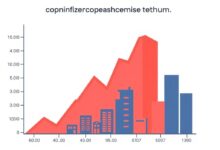Beginner’s guide to reading stock charts

To grasp the essence of market movements, focus on candlestick patterns. These visual representations encapsulate price action within a specific timeframe, revealing critical insights about buying and selling pressure. Each candlestick comprises four vital components: open, high, low, and close. Familiarize yourself with formations like doji, engulfing patterns, and hammer candles to predict future price movements.
Recognizing trends is equally important in assessing potential opportunities. Price trends can be upward (bullish), downward (bearish), or sideways (consolidation). Employ trendlines to visualize these movements; they connect significant highs or lows, offering clarity on market direction. Understanding the strength of a trend can guide your entry and exit points effectively.
Technical analysis extends beyond mere observation; it involves interpreting various indicators alongside candlesticks. Indicators such as moving averages and Relative Strength Index (RSI) provide context to price data, helping you make informed decisions when trading equities. Combining these tools will enhance your ability to navigate the complexities of financial markets.
Reading Candlestick Patterns
Focus on the body and wicks of candlesticks to determine market sentiment. A long body indicates strong buying or selling pressure, while short bodies suggest indecision among traders.
Identify key patterns like Doji, which signals potential reversals; a Doji appears when opening and closing prices are nearly equal. Watch for this formation at the end of a trend as it may indicate a shift in momentum.
The Hammer is another crucial pattern, typically found at the bottom of downtrends. It features a small body with a long lower wick, suggesting that buyers are starting to step in after selling pressure has receded.
Conversely, the Shooting Star, often seen at the top of an uptrend, has a small body with a long upper wick. This pattern hints at potential bearish reversal as sellers begin to take control.
Utilize these candlestick formations alongside other indicators to enhance your analysis. For instance, combining them with moving averages can confirm trends or reversals. Always consider volume; higher trading volumes associated with these patterns strengthen their validity.
Observe how multiple candlesticks interact over time; sequences such as three consecutive rising candles followed by a bearish engulfing pattern may signal an impending downturn in stocks.
By mastering these visual cues, you’ll gain insights into market dynamics and better position yourself for successful trades. Keep honing your skills in reading candlesticks to refine your understanding of price movements and trader psychology.
Identifying Support and Resistance
To effectively spot support and resistance levels, focus on historical price points where the asset has reversed direction. These areas act as psychological barriers for traders, impacting future movements. Use horizontal lines to mark these zones on your graph, as they represent critical thresholds.
Support occurs when a downtrend stalls as buyers enter the market at lower prices, preventing further declines. Conversely, resistance emerges during uptrends when sellers dominate, causing price retreats. Identify these levels by analyzing previous highs and lows over various time frames; the more frequently a level is tested without being broken, the stronger it becomes.
Candlesticks provide valuable insights into market sentiment around these key levels. Pay attention to patterns such as pin bars or engulfing candles that form near support or resistance. These indicators often signal potential reversals or breakouts.
Incorporate technical analysis tools like moving averages or Fibonacci retracement to enhance your identification process. For example, a moving average can serve as dynamic support during an upward trend while also indicating resistance in downtrends. Combining multiple indicators increases the reliability of your findings.
Monitor trends closely; when an asset consistently breaks through resistance or falls below support, it signifies a shift in market dynamics. Adapt your trading strategy accordingly, whether it’s entering new positions or adjusting existing ones based on these significant levels.
Volume Indicators
Volume indicators are critical for assessing the strength of price movements in financial markets. Higher volumes often indicate stronger trends, while lower volumes may suggest weak price movements.
- Definition: Volume measures the total number of shares or contracts traded within a specific timeframe. It reflects market activity and liquidity.
- Types of Volume Indicators:
- On-Balance Volume (OBV): This indicator uses cumulative volume to show buying and selling pressure. Rising OBV indicates accumulation, while falling OBV suggests distribution.
- Accumulation/Distribution Line (A/D): This tool combines price and volume to determine if a stock is being accumulated or distributed. A rising A/D line signals buying interest, whereas a declining line indicates selling pressure.
- Chaikin Money Flow (CMF): This indicator calculates the buying and selling pressure over a specified period. Positive values indicate strong buying, while negative values signal selling pressure.
Incorporating these indicators into technical analysis can enhance decision-making. Pay attention to volume spikes during significant candlestick patterns; they often confirm trends or reversals.
- Confirming Trends: High volume on an uptrend validates bullish momentum, while high volume on a downtrend confirms bearish sentiment.
- Divergence Analysis: When price moves in one direction but volume decreases, it may signal weakening momentum. Conversely, increasing volume during price consolidation can indicate an impending breakout.
A thorough examination of volume alongside price action will refine your trading strategy and improve overall market perception. Keep monitoring these indicators to align with prevailing trends effectively.
Using Moving Averages
Incorporate moving averages to identify trends and smooth out price fluctuations in stocks. Utilize the simple moving average (SMA) or exponential moving average (EMA) depending on your strategy. The SMA calculates the average price over a specific period, while the EMA gives more weight to recent prices, making it responsive to new information.
For short-term trading, consider using a 10-day or 20-day EMA. This helps capture quick shifts in momentum. For longer-term analysis, apply a 50-day or 200-day SMA to gauge overall market direction and filter out noise from daily candlestick patterns.
Crossovers are powerful signals; when a shorter moving average crosses above a longer one, it indicates bullish momentum. Conversely, when it crosses below, this may suggest bearish pressure. Monitor these crossovers closely for entry and exit points.
Integrate moving averages with volume indicators to enhance decision-making. An increase in volume alongside a crossover strengthens the signal’s reliability. This combination aids in confirming trends and provides better insights into potential reversals.
Experiment with multiple timeframes; this allows you to see how trends develop across various scales. Adjust parameters based on the specific stock’s volatility and historical performance for optimal results. By mastering this tool within technical analysis, enhance your ability to navigate market movements effectively.
Interpreting Trend Lines
Draw trend lines to identify the direction of price movements in your selected assets. A rising trend line connects a series of higher lows, indicating bullish sentiment, while a declining trend line links lower highs, signaling bearish momentum. Always ensure that the lines touch at least two points for accuracy.
To enhance your technical analysis, look for convergence between trend lines and candlestick formations. This intersection often signifies stronger support or resistance levels, providing key insights into potential price reversals.
Extend your lines beyond the existing data points to project future price movement. Monitor how prices interact with these extended trend lines; frequent bounces off a line reinforce its significance. If the price breaks through a well-established trend line, consider it a critical shift in market dynamics.
Acknowledge that trends can evolve over time. Regularly reassess your drawn lines as new data emerges to maintain relevance in your analysis. Adjusting them accordingly allows for more accurate predictions concerning stock performance.
Incorporate trend lines with other indicators like moving averages or volume analysis for enhanced confirmation. This multi-faceted approach strengthens trading decisions and provides a clearer picture of market conditions.







